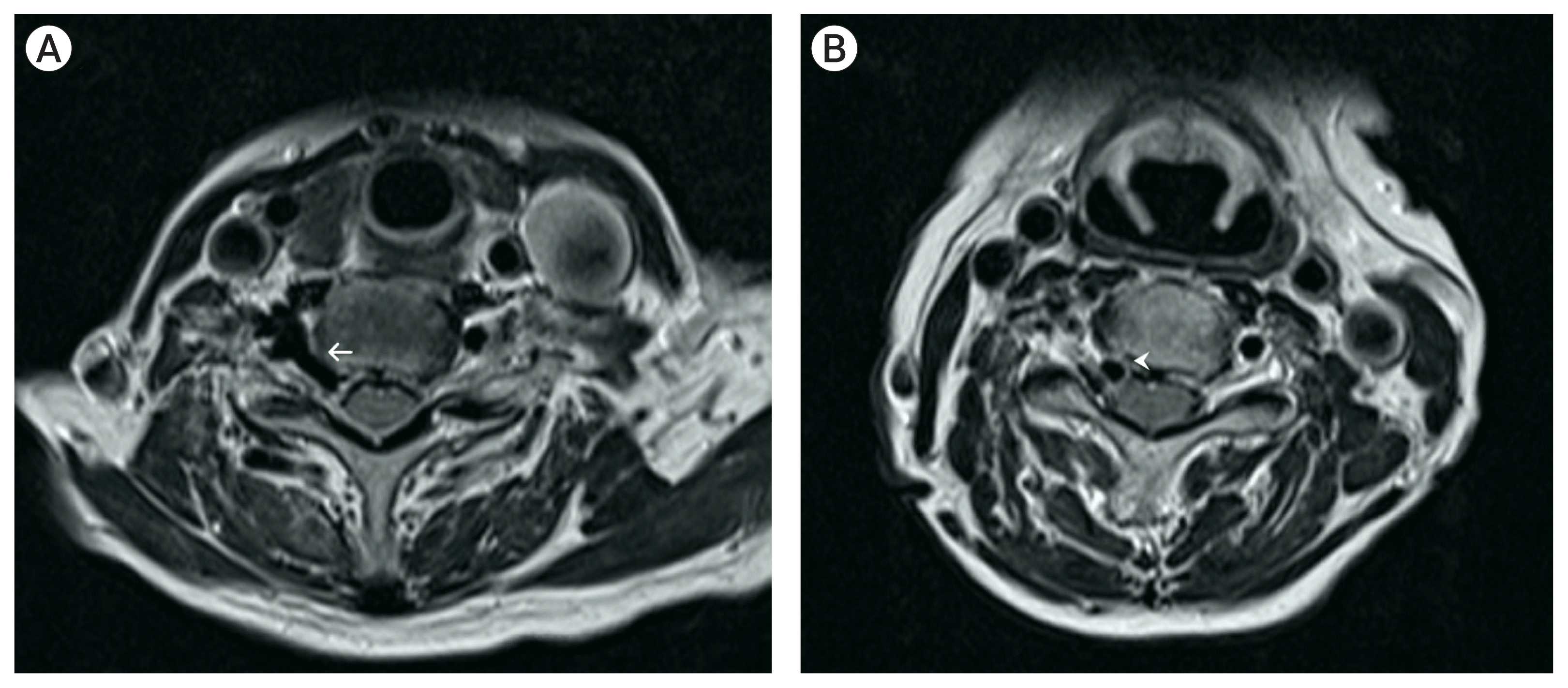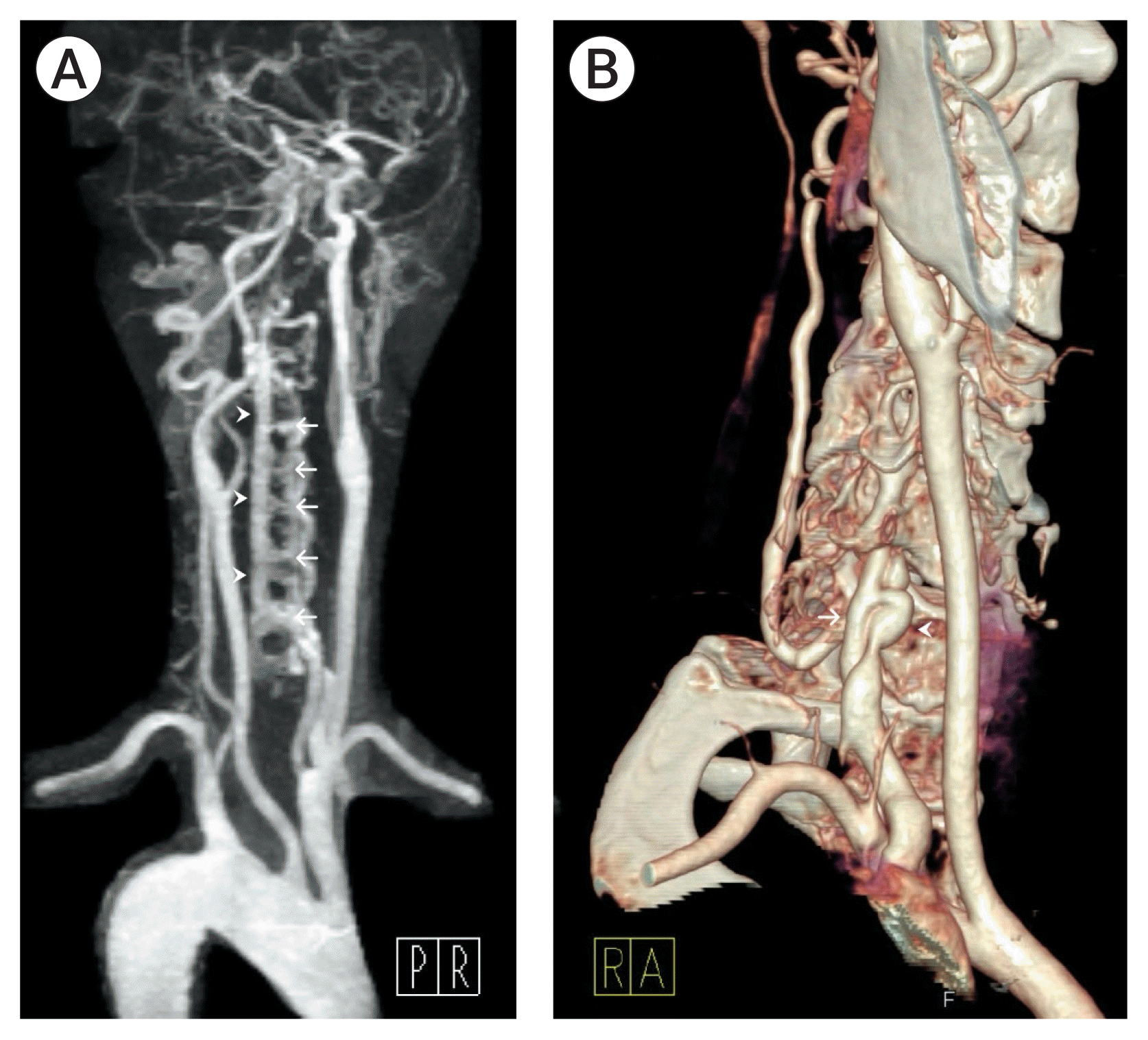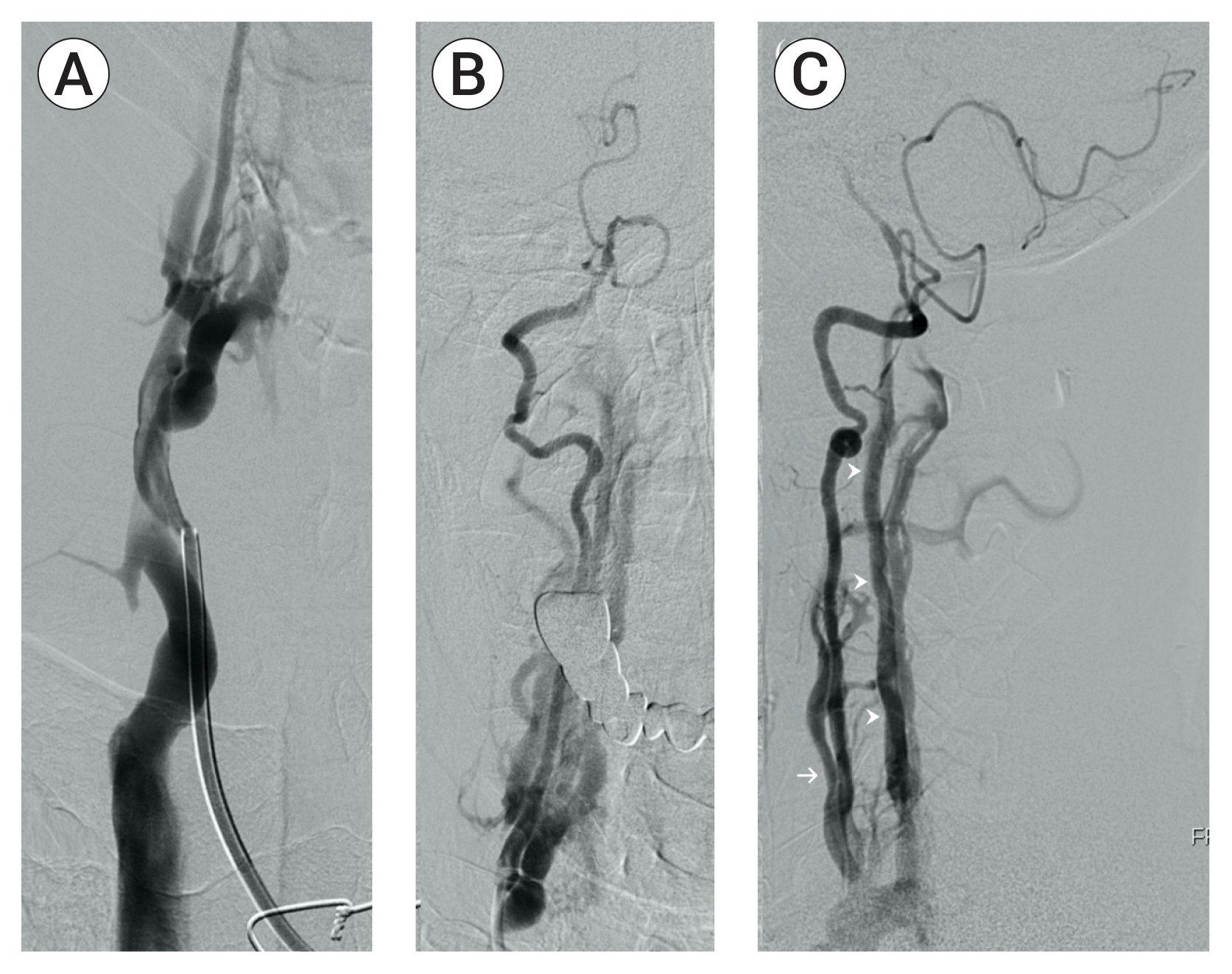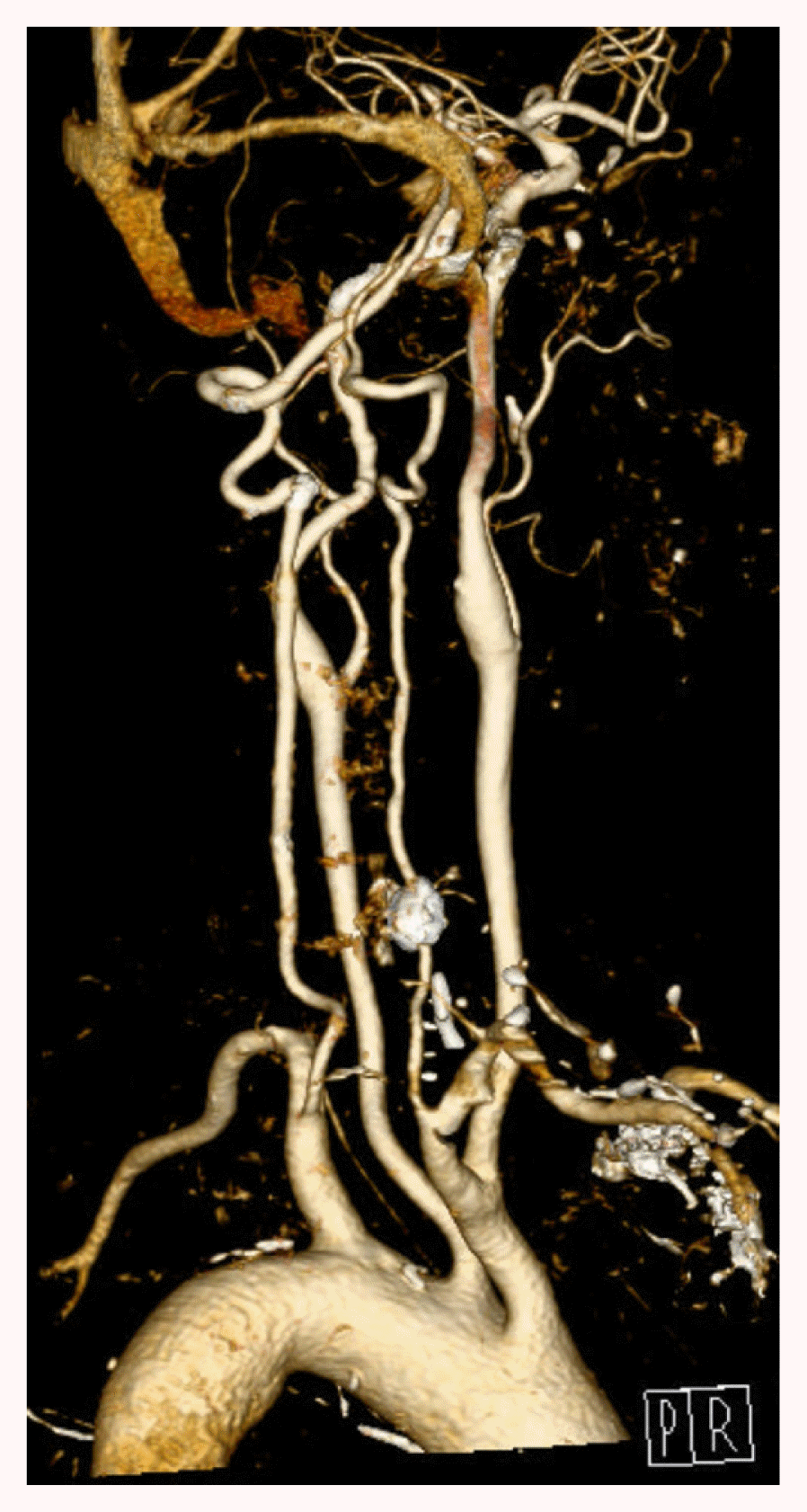1. Aljobeh A, Sorenson TJ, Bortolotti C, Cloft H, Lanzino G. Vertebral arteriovenous fistula: a review article. World Neurosurg. 2019; Feb. 122:e1388–97.

2. Ashour R, Orbach DB. Lower vertebral-epidural spinal arteriovenous fistulas: a unique subtype of vertebrovertebral arteriovenous fistula, treatable with coil and Penumbra Occlusion Device embolization. J Neurointerv Surg. 2016; Jun. 8(6):643–7.

3. Briganti F, Tedeschi E, Leone G, Marseglia M, Cicala D, Giamundo M, et al. Endovascular treatment of vertebro-vertebral arteriovenous fistula. A report of three cases and literature review. Neuroradiol J. 2013; Jun. 26(3):339–46.
4. Briganti F, Tortora F, Elefante A, Volpe A, Bruno MC, Panagiotopoulos K. An unusual case of vertebral arteriovenous fistula treated with electrodetachable coil embolization. Minim Invasive Neurosurg. 2004; Dec. 47(6):386–8.

5. Brinjikji W, Colombo E, Lanzino G. Clinical and angioarchitectural characteristics of spinal vascular malformations of the cervical spine. J Neurosurg Spine. 2020; Jan. 1–8.

6. Brinjikji W, Yin R, Nasr DM, Lanzino G. Spinal epidural arteriovenous fistulas. J Neurointerv Surg. 2016; Dec. 8(12):1305–10.

7. Geng J, Hu P, Ma Y, Zhang P, Zhang H. Endovascular treatment of V3 segment vertebro-vertebral arteriovenous fistula with Willis covered stent: Case report and literature review. Interv Neuroradiol. 2019; Feb. 25(1):97–101.

8. Guneyli S, Cinar C, Bozkaya H, Korkmaz M, Oran I. Endovascular management of congenital arteriovenous fistulae in the neck. Diagn Interv Imaging. 2016; Sep. 97(9):871–5.

9. Hiramatsu M, Sugiu K, Ishiguro T, Kiyosue H, Sato K, Takai K, et al. Angioarchitecture of arteriovenous fistulas at the craniocervical junction: a multicenter cohort study of 54 patients. J Neurosurg. 2018; Jun. 128(6):1839–49.

10. Honarmand AR, Ansari SA, Alden TD, Soltanolkotabi M, Schoeneman SE, Hurley MC, et al. Endovascular management of pediatric high-flow vertebro-vertebral fistula with reversed basilar artery flow. A case report and review of the literature. Interv Neuroradiol. 2013; Jun. 19(2):215–21.
11. Huang W, Gross BA, Du R. Spinal extradural arteriovenous fistulas: clinical article. J Neurosurg Spine. 2013; Nov. 19(5):582–90.
12. Hughes DG, Alleyne CH Jr. Rare giant traumatic cervical arteriovenous fistula in neurofibromatosis type 1 patient. BMJ Case Rep. 2012; Jun. 2012:bcr1220115354.

13. Inoue T, Endo T, Sato K, Fesli R, Ogawa Y, Fujimura M, et al. Massive intramedullary hemorrhage after subarachnoid hemorrhage in patient with vertebrovertebral arteriovenous fistula. World Neurosurg. 2019; Sep. 129:432–6.

14. Kawabori M, Hida K, Yano S, Asano T, Iwasaki Y. Cervical epidural arteriovenous fistula with radiculopathy mimicking cervical spondylosis. Neurol Med Chir (Tokyo). 2009; Mar. 49(3):108–13.

15. Li F, Song X, Liu C, Liu B, Zheng Y. Endovascular stent-graft treatment for a traumatic vertebrovertebral arteriovenous fistula with pseudoaneurysm. Ann Vasc Surg. 2014; Feb. 28(2):489.e11–4.

16. Miralbes S, Cattin F, Andrea I, Bonneville JF. Vertebral arteriovenous fistula: endovascular treatment with electrodetachable coils. Neuroradiology. 1998; Nov. 40(11):761–2.

17. Miyamoto N, Naito I, Takatama S, Iwai T, Tomizawa S, Inoue HK. Spinal epidural arteriovenous fistulas with unusual manifestation of sudden onset of severe neurological deficits: case report. Neurol Med Chir (Tokyo). 2013; 53(12):896–901.

18. Nakagawa I, Park HS, Hironaka Y, Wada T, Kichikawa K, Nakase H. Cervical spinal epidural arteriovenous fistula with coexisting spinal anterior spinal artery aneurysm presenting as subarachnoid hemorrhage--case report. J Stroke Cerebrovasc Dis. 2014; Nov–Dec. 23(10):e461–5.

19. Ono I, Satow T, Ito Y, Hamano E, Matsubara H, Kataoka H, et al. Case of iatrogenic vertebro-vertebral arteriovenous fistula treated by combination of double-catheter and balloon anchoring techniques. World Neurosurg. 2019; Aug. 128:98–101.

20. Rajadurai S, Muthukumaraswamy S, Hussain Z. Endovascular treatment of vertebral-venous fistula with flow-diverting stent. World Neurosurg. 2019; Jan. 121:33–6.

21. Rangel-Castilla L, Holman PJ, Krishna C, Trask TW, Klucznik RP, Diaz OM. Spinal extradural arteriovenous fistulas: a clinical and radiological description of different types and their novel treatment with Onyx. J Neurosurg Spine. 2011; Nov. 15(5):541–9.

22. Shirakawa M, Nishioka T, Yamashita K, Maeda Y, Arita N. Traumatic vertebro-vertebral arteriovenous fistula manifesting as radiculopathy. Case report. Neurol Med Chir (Tokyo). 2008; Apr. 48(4):167–70.
23. Takai K, Shojima M, Imai H, Saito N, Taniguchi M. Microsurgical and endovascular treatments of spinal extradural arteriovenous fistulas with or without intradural venous drainage. World Neurosurg. 2018; Mar. 111:e819–29.

24. Takai K, Taniguchi M. Comparative analysis of spinal extradural arteriovenous fistulas with or without intradural venous drainage: a systematic literature review. Neurosurg Focus. 2012; May. 32(5):E8.

25. Tenjin H, Kimura S, Sugawa N. Coil embolization of vertebro-vertebral arteriovenous fistula: a case report. Surg Neurol. 2005; Jan. 63(1):80–3. discussion 83.

26. Walcott BP, Berkhemer OA, Leslie-Mazwi TM, Chandra RV, Ogilvy CS, Yoo AJ. Multimodal endovascular treatment of a vertebrovertebral fistula presenting with subarachnoid hemorrhage and hydrocephalus. J Clin Neurosci. 2013; Sep. 20(9):1295–8.

27. Wang Q, Song D, Chen G. Endovascular treatment of high-flow cervical direct vertebro-vertebral arteriovenous fistula with detachable coils and Onyx liquid embolic agent. Acta Neurochir (Wien). 2011; Feb. 153(2):347–52.

28. Yeh CH, Chen YL, Wu YM, Huang YC, Wong HF. Anatomically based approach for endovascular treatment of vertebro-vertebral arteriovenous fistula. Interv Neuroradiol. 2014; Dec. 20(6):766–73.









 PDF
PDF Citation
Citation Print
Print




 XML Download
XML Download